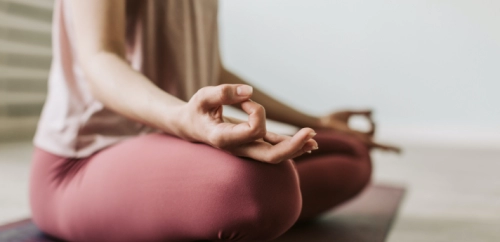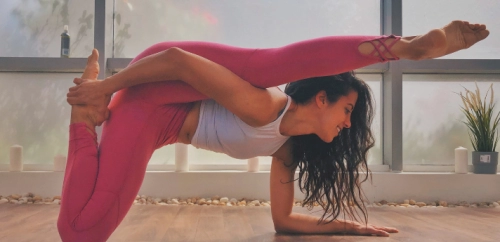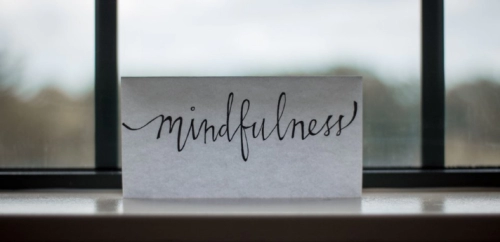How Long Should You Practice Mindfulness For?

Practicing mindfulness is a great tool for people of any background. That's why there has been a surge of people embracing the ancient practice over the past several decades. Mindfulness brings with it clarity of mind and a balance of energies that allows you to grow physically, mentally, and spiritually.
The first thing you have to understand is that you need to start with smaller time periods when beginning practices. Eventually working your way up to about 20 minutes every day will bring about amazing changes. For those that have more time available, you can of course always extend that time out, but 20 minutes is a good goal to reach.
There are a lot of factors that go into determining how long one should practice mindfulness in their everyday life. We want to take a deep dive into the main question as well as look at some other aspects to help you get a more well-rounded look at the topic.
Some Sciency Stuff: Muscle Tension & Biofeedback
Over the past several years, many people have begun looking at mindfulness practices in a more scientific realm. Before this, it was thought of as a spiritual practice, and though it still is, there have been some significant studies and specific scientific proofs found after studying those who practice mindfulness.
To understand how long you should practice mindfulness for, understanding the science behind a couple of things like muscle tension and biofeedback can help you really hone in on the answer to that question. It has been shown that as you get further into mindfulness practices such as meditation, your muscles begin to relax.
Ideally, this happens about 20 minutes into any type of mindfulness practice. So it would be ideal if you could work your mindfulness practices up to those 20 minutes or even longer mark.
Part of the reason your muscles and your mind can relax is due to a naturally occurring process in our body known as biofeedback. On top of allowing a more substantial relaxation of muscles, biofeedback also helps you become more aware of distractions. All of which can make your mindfulness practices more successful.
How Long? And When Should You Practice Mindfulness?
After looking at a few of the more scientific aspects of the practice, now we can really dive into how long you should practice mindfulness. Another question that often comes up with this one is when should you practice these techniques. So both of these will be the focus of this section!
The truth is that you have to start small. So incorporating 5 minutes a day into your daily life with mindfulness practices, whether that be meditation or breathwork, can start the process of being able to reap the benefits of this amazing practice.
There have been many studies, though, that have shown that the more you can incorporate mindfulness into your daily life, the more impact it has on your mood, memory, and physical health.
Now, when it comes to the time of day one should insert mindfulness practices at, it really depends on your schedule. You want to make sure that you set aside the time and instill the routines when you can focus on them completely.
Some find utilizing mindfulness practices like meditation or journaling in the morning or evening best suits their needs. In the end, though, it really depends on you and so you need to really try a couple of different schedules to see which one will work the best for you.
Tips To Help Build Your Mindfulness Practice
Now that you understand how long you should practice mindfulness, we can take a look at a few tips to help you build that mindfulness practice up to the ideal amount of time of approximately 20 minutes.
Here are some key tips that we think will help you build your mindfulness practice:
Find Your Space
Depending on what type of mindfulness practice you're doing, you're going to want to find a correlating space that works for you. You will need to find someplace you feel comfortable and can have quiet so that you can focus on the mindfulness practice. If need be you can also make a space that you feel good with that has good light and make it your own by decorating it to instill peace and calm in your mind.
Put It On Your Calendar
We all live with calendars in our pockets. To build up your mindfulness practice and reach that ideal goal of 20 minutes or more a day, it might help you to schedule your time. If that is the case, what better way than to set up alarms on your phone to help trigger the practice.
Get Cozy
You have to be able to find a comfortable position so that you can relax enough to focus on your breath. So find yourself some comfortable clothes and settle down in your designated area to start the process of relaxing your body. Of course, getting cozy can also mean putting on music and burning incense. It's whatever that is going to get you in a mindset to allow your mindfulness practice to be successful.
Follow Your Mind
No matter what type of mindfulness practice you're doing you're going to want to be able to pay attention to your thoughts. It's not about controlling your mind, it's about listening to it and following it wherever it goes. By allowing this you're going to work through several things and your mind will drift and eventually find itself so that you can reach a calm mindset and go about your day.
It's Okay To Feel Negative
The end goal is to be joyous in your life. But that doesn't mean that negative emotions and thoughts will not ever be present. One of the key pillars of mindfulness practices is acceptance, and that goes for negative emotions as well. Being able to accept and acknowledge them allows you to deal with them and move on so that you can stay present in the moment. So let your negative emotions be present, acknowledge them, and then let them go.
Get to Know Yourself
Another great tip to help build your mindfulness practice is to really get to know yourself. This means understanding your thoughts and feelings, whether they are positive or negative. By building a better understanding of yourself, you'll be able to set up mindful practices that will build on each other and allow you to reach the optimal goal of 20 minutes or more a day.
End With Gratitude
It's important to end whatever mindfulness practice you are doing with gratitude and a thankful spirit. That means taking time in your practice to really think about how you're feeling and making notes so that you can build your self-awareness. With more self-awareness, you will be able to build a bigger mindfulness practice and find your way to happiness.
Final Thoughts
We hope that we have helped you answer the question of how long you should practice mindfulness. It really depends on the amount of time you have available but there is a multitude of ways that you can insert mindfulness practices into your daily life so you can achieve the right amount for you.
By finding the right rhythm for you and the practices that work within your schedule, you will be using mindfulness to find your path to a happier and healthier life.















